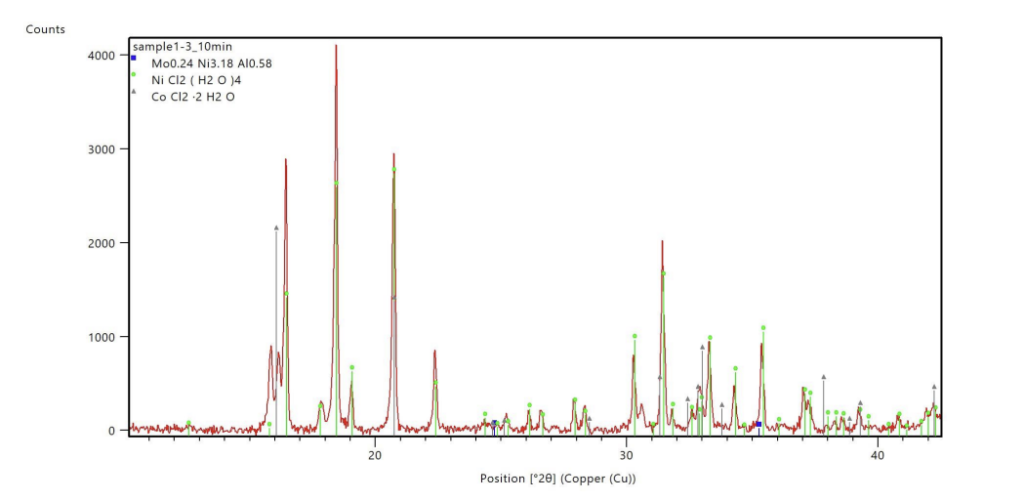 X-ray Diffraction (XRD)
X-ray Diffraction (XRD)
Overview
X-ray Diffraction Analysis is a cornerstone of materials science and crystallography, enabling precise determination of atomic and molecular structures within materials. By harnessing the principles of X-ray diffraction, this technique unveils the atomic arrangement within crystalline structures, identifies phases, and offers profound insights into diverse material properties.
XRD operates on the principle of X-ray interference, where a monochromatic X-ray beam is directed at a crystalline sample. As X-rays interact with the crystal lattice, they scatter at specific angles, generating a diffraction pattern on a detector. This pattern of constructive and destructive interference contains crucial structural information.
Through the analysis of diffraction peak angles and intensities, XRD reveals essential structural parameters, including lattice constants, unit cell dimensions, and atomic positions. This wealth of structural data facilitates material identification, phase analysis, investigation of phase transformations, and provides a deeper understanding of mechanical, thermal, and electrical properties.
Outermost Technology’s X-ray Diffraction Analysis services deliver precise and insightful structural analysis for a wide range of materials, from minerals and metals to polymers and pharmaceuticals. Whether you are exploring novel materials, optimizing processes, or ensuring product quality, our expertise and state-of-the-art equipment empower you to unlock the mysteries concealed within crystalline structures.
We invite you to explore the capabilities and benefits of X-ray Diffraction Analysis on this page, discover its wide-ranging applications across various industries and research domains, and learn how our services can elevate your material characterization needs. Join us on a journey of discovery as we delve into the world of crystallography through the lens of X-ray Diffraction.
Services
- X-ray diffraction
- Pair distribution function (PDF) analysis
- Small and wide-angle X-ray scattering (SAXS, WAXS)
Pricing
- Regular service: Starts from $400 per sample with 5 – 7 days turnaround.
- Relaxed service: Starts from $250 with 7 – 10 days turnaround.
- For a comprehensive overview of our pricing structure, please log in to the Bee Portal.
Equipment
- Trio and twin optics: Software push-button switch between motorized divergence slit (Bragg-Brentano), high intensity Ka1,2 parallel beam, and high resolution Ka1 parallel beam
- Dynamic beam optimization: Dynamic synchronization of motorized divergence slits, motorized anti-scatter screen, and variable active detection window with 2θ angular range of <1 to >150
- LYNXEYE XE-T:
- Energy resolution: <380 eV @ 8keV
- Detection modes: 0D, 1D, and 2D
- Wavelengths: Cr, Co, Cu, Mo and Ag
- D8 goniometer: Two-circle goniometer with independent stepper motors and optical encoders
- Non-ambient
- Temperature: ~ 85K up to 2500K
- Pressure: 10-4 mbar up to 10 bar
- Humidity: 5% to 95% RH

FAQ
A: X-ray Diffraction (XRD) analysis is an analytical technique used to determine the atomic and molecular structure of materials by examining how X-rays are scattered when they interact with a crystalline sample.
A: XRD works by directing a monochromatic X-ray beam at a crystalline sample. When X-rays interact with the crystal lattice, they scatter at specific angles, producing a diffraction pattern. Analysis of this pattern provides information about the material’s atomic arrangement and structural properties.
A: XRD equipment includes powder X-ray diffractometers for bulk materials, single-crystal diffractometers for high-precision crystallography, and small-angle X-ray scattering (SAXS) instruments for nanoscale analysis. The choice depends on the nature of the sample and analysis requirements.
A: XRD analysis can provide information about the crystal structure, lattice parameters, unit cell dimensions, phase identification, crystallinity, and the arrangement of atoms or molecules within a material.
A: XRD analysis is widely used in materials science, geology, chemistry, and various industries. It is employed for mineral identification, pharmaceutical analysis, materials characterization, quality control, and studying phase transitions in solids.
A: XRD is essential in materials research and development because it allows scientists to gain insights into the atomic and molecular structures of materials. This knowledge is crucial for designing new materials with specific properties and understanding their behavior.
A: Advantages of XRD include non-destructive analysis, high precision, and the ability to provide detailed structural information. It is also versatile and can analyze a wide range of materials, from metals and ceramics to organic compounds.
A: XRD is primarily used for crystalline materials. It is not suitable for analyzing amorphous materials (lacking a well-defined crystalline structure) or liquids. However, specialized techniques like X-ray amorphous scattering can be used for amorphous materials.
A: XRD is used in quality control to ensure the consistency and purity of materials. By analyzing the crystalline phases and structures, it can identify impurities, confirm the presence of desired phases, and assess the quality of manufactured products.
A: Outermost Technology’s XRD services offer precise structural analysis and expertise across a broad spectrum of materials. Whether you are conducting research, developing new products, or ensuring quality in your industry, our state-of-the-art XRD capabilities can provide critical insights and support your goals.

